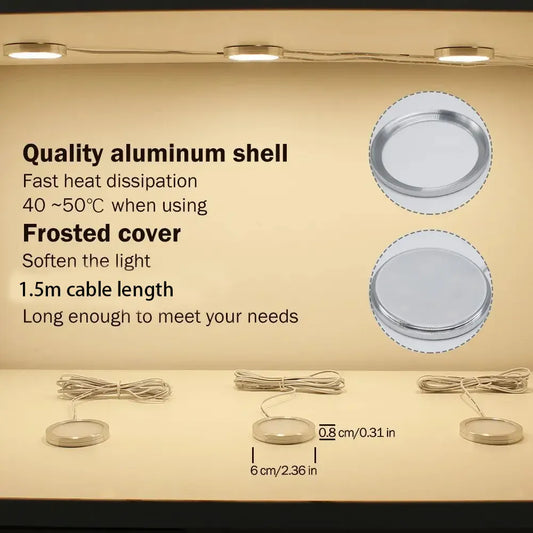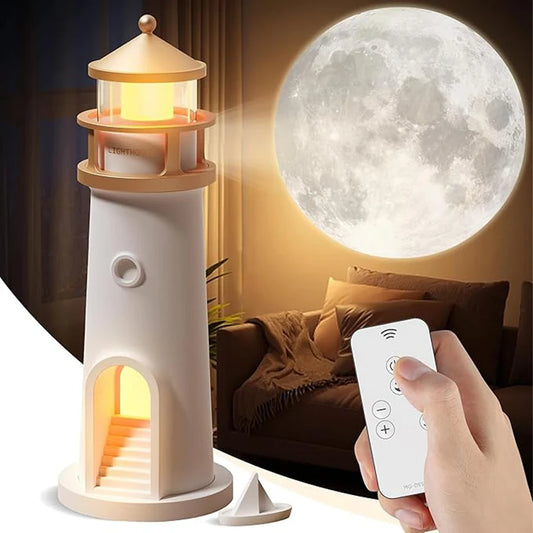
Under Cabinet Lighting with Motion Sensors: Benefits and Installation
Share
Under cabinet lighting is a valuable addition to any kitchen, providing both functional and aesthetic benefits. When equipped with motion sensors, this type of lighting offers enhanced convenience, energy efficiency, and safety. This blog post explores the benefits of under cabinet lighting with motion sensors and provides detailed, research-backed guidance on installation.
Benefits of Motion Sensor Under Cabinet Lighting
1. Enhanced Convenience
Automatic Operation Motion sensor lighting activates automatically when movement is detected, eliminating the need to manually switch lights on and off. This is particularly beneficial in kitchens where hands are often full or dirty. According to a study published in the Journal of Light & Visual Environment, automatic lighting significantly improves user convenience in task-oriented areas.
Hands-Free Operation The hands-free nature of motion sensor lighting is ideal for maintaining hygiene in the kitchen. The American Journal of Infection Control notes that reducing contact with surfaces in food preparation areas can lower the risk of cross-contamination, promoting a safer kitchen environment.
2. Energy Efficiency
Reduced Energy Consumption Motion sensor lights help save energy by only illuminating when needed. The U.S. Department of Energy highlights that motion sensor lighting can reduce energy usage by up to 30% compared to manually operated lights, as they automatically turn off when no movement is detected.
Optimized Light Usage These lights ensure that energy is not wasted on lighting unoccupied spaces. A study by the Pacific Northwest National Laboratory found that implementing motion sensor lighting in residential settings resulted in a significant reduction in overall energy consumption, contributing to lower utility bills and environmental benefits.
3. Improved Safety
Illuminated Pathways In kitchens, where accidents like cuts and burns are common, having well-lit pathways is crucial. Motion sensor lighting ensures that key areas are always well-lit when someone is present, reducing the risk of accidents. The National Safety Council emphasizes the importance of adequate lighting in preventing household injuries.
No More Stumbling in the Dark For families with children or elderly members, motion sensor lighting can provide essential illumination during nighttime visits to the kitchen, reducing the risk of falls and injuries.
Installation of Motion Sensor Under Cabinet Lighting
1. Choosing the Right Products
Sensor Sensitivity and Range Select motion sensor lights with adjustable sensitivity and detection range to customize the activation area according to your kitchen layout. A study in the Lighting Research Journal recommends using sensors with a range of 6 to 12 feet for optimal performance in kitchen settings.
Brightness and Color Temperature Ensure the lights provide adequate brightness (measured in lumens) and appropriate color temperature (measured in Kelvin) for your needs. Task areas benefit from brighter, cooler lights (3500K-5000K), while warmer lights (2700K-3000K) are suitable for ambient lighting.
Energy Efficiency Ratings Look for ENERGY STAR certified products, which meet strict energy efficiency guidelines set by the U.S. Environmental Protection Agency. These products are designed to use less energy and have a longer lifespan.
2. Installation Steps
Tools and Materials Needed
- LED motion sensor under cabinet lights
- Measuring tape
- Drill and screws
- Adhesive strips or mounting brackets
- Screwdriver
- Power source (plug-in or hardwired options)
Step-by-Step Installation Guide
a. Planning and Measurement
- Measure the length of the area where the lights will be installed.
- Plan the placement of each light, ensuring they cover all necessary workspaces without overlapping sensor ranges.
b. Preparing the Installation Area
- Clean the underside of the cabinets to ensure a secure fit.
- Mark the locations for each light and sensor.
c. Mounting the Lights
- For adhesive-backed lights, remove the protective strip and press the light firmly into place.
- For screw-mounted lights, drill pilot holes and secure the lights with screws or mounting brackets.
d. Connecting the Power Source
- For plug-in lights, route the power cords discreetly along the cabinet edges to the nearest outlet.
- For hardwired lights, follow the manufacturer's instructions for connecting to the electrical system. If unsure, consult a professional electrician to ensure safety and compliance with local codes.
e. Testing and Adjusting
- Power on the lights and test the motion sensors to ensure they activate at the desired range and sensitivity.
- Adjust the sensor settings as needed for optimal performance.
Conclusion
Under cabinet lighting with motion sensors offers significant benefits, including enhanced convenience, energy efficiency, and improved safety. By understanding the advantages and following proper installation steps, you can transform your kitchen into a more functional and user-friendly space. Motion sensor lighting not only reduces energy consumption and utility costs but also contributes to a safer and more hygienic kitchen environment.
For more comprehensive guidance on selecting the best under cabinet lighting for your kitchen, check out our detailed guide: Under Cabinet Lighting Buying Guide.
Explore our range of motion sensor under cabinet lighting solutions at Lumaz to find the perfect fit for your kitchen.




























 />
/>
 />
/>
 />
/>
 />
/>
 />
/>